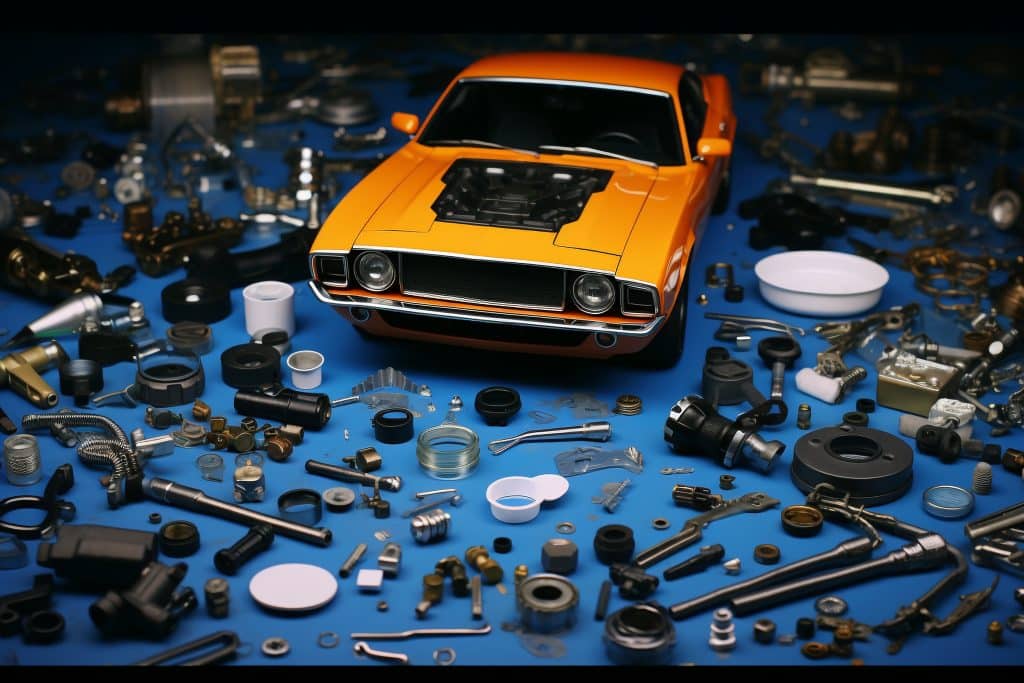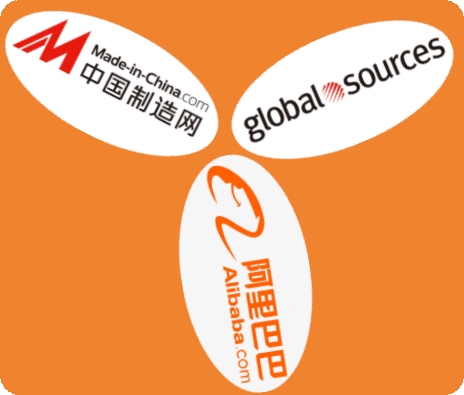The auto parts industry is a fast-growing market, with global demand increasing steadily. Whether for maintenance, repairs, or upgrades, car parts are essential for keeping vehicles running efficiently. China, being a leading global manufacturer, has become a top destination for sourcing car parts due to its competitive prices, diverse range of products, and strong industrial base. Importing car parts from China, however, requires a detailed plan and an understanding of logistics, supplier selection, shipping methods, and customs clearance processes.

In this guide, we’ll walk you through each step of the process, providing insights into how to import car parts from China, including buying channels, choosing suppliers, handling logistics, and clearing customs. This will ensure your import experience is smooth and profitable.
Why Import Car Parts from China?
Before we dive into the technicalities, let’s explore why China is a preferred choice for car parts imports:
- Competitive Prices: Chinese car part manufacturers offer some of the lowest prices globally without compromising quality, giving importers higher profit margins.
- Diverse Product Range: China manufactures a wide range of car parts, including OEM (Original Equipment Manufacturer) and aftermarket parts.
- Customization: Many factories in China offer customization services based on your specifications, allowing you to create niche products tailored to your market.
- High Production Capacity: Chinese manufacturers have the capacity to produce large volumes of parts, ensuring that you can meet demand without delays.
- International Standards: Car parts manufactured in China often meet global standards, such as ISO, TS 16949, and E-Mark, making them compliant with local regulations worldwide.
Step-by-Step Guide to Importing Car Parts from China
Step 1: Identifying the Right Car Parts to Import
The first step is to identify the specific car parts you want to import. You need to define:
- Type of Parts: Are you importing engine components, brake systems, electrical parts, or body parts?
- Specifications: Size, material, and technical specifications should be clearly outlined.
- Market Demand: Conduct a market analysis to determine which car parts are in high demand in your country.
Having a Product Specification Sheet is essential. It should include detailed descriptions and any required certifications for safety and compliance (e.g., E-Mark, CE).
Step 2: Research Suppliers in China
There are multiple ways to find suppliers for car parts in China. Here are the top platforms where you can source reliable suppliers:

Online Marketplaces (Purchase Channels with Links)
Alibaba: Alibaba is the most popular B2B platform, connecting you with thousands of car parts manufacturers in China. You can search for suppliers, get quotes, and place orders directly.
Made-in-China: This platform is well-known for providing quality goods at competitive prices. You can also find OEM and aftermarket suppliers.
Global Sources: Another large marketplace, Global Sources connects international buyers with Chinese suppliers, offering a variety of car parts.
Attending Trade Fairs for Direct Supplier Contacts
Visiting trade fairs is a great way to meet suppliers face-to-face and inspect their products. Major trade fairs for car parts include:

Canton Fair: Held biannually in Guangzhou, this is China’s largest trade show, covering various industries, including automotive parts.
Automechanika Shanghai: One of the largest auto parts exhibitions in Asia, it offers a chance to connect with top manufacturers in the industry.
Guangzhou International Auto Show: Focuses on automotive and aftermarket parts, providing insight into the latest trends and innovations.
Step 3: Ensure Compliance with Quality Standards
Ensuring that your products meet international quality standards is essential for selling car parts in most markets. Common certifications include:
ISO/TS 16949: A global standard specifically for automotive quality management.
ISO 9001: Ensures that the supplier follows a consistent quality management system.
E-Mark Certification: Required in Europe for parts like lights, mirrors, and brake systems to ensure safety compliance.
Request quality certificates from suppliers before confirming orders, and ask for samples to evaluate the quality.
Step 4: Request Quotes and Compare Suppliers
Once you’ve shortlisted potential suppliers, it’s time to request RFQs (Request for Quotes). Make sure to gather quotes from multiple suppliers (10-15 suppliers at least) and compare based on the following:
Product Price: Choose a supplier that offers competitive pricing without compromising quality.
Minimum Order Quantity (MOQ): Ensure the MOQ aligns with your business needs.
Shipping Options: Some suppliers include shipping services in their quotes. Verify shipping rates and delivery times.
Additional Services: Look for suppliers that offer packaging, quality control, and even branding services.
Step 5: Secure the Deal with a Contract
After negotiating the terms and selecting a supplier, create a formal purchase contract. The contract should include:
Product Specifications: Detailed descriptions and the expected quality standards.
Price and Payment Terms: Agree on the total cost, payment terms (e.g., TT, L/C), and deadlines.
Shipping Terms: Specify the agreed shipping method (FOB, CIF, DDP) and delivery time.
Penalties: Outline penalties in case of delayed shipment or non-compliance with quality.
Ensure the contract is enforceable in China, especially if disputes arise.
Step 6: Choose the Right Shipping Method
When it comes to shipping car parts from China, you have several options. Choosing the right one depends on the size of your order, budget, and urgency.
Sea Freight (Best for Bulk Shipments)
Cost: Sea freight is the most economical option, especially for large orders.
Transit Time: 30-45 days depending on the route.
Best for: Large or heavy car parts like engines, body parts, and transmission systems.
Air Freight (Best for Urgent or High-Value Goods)
Cost: Higher than sea freight but faster.
Transit Time: 5-7 days.
Best for: High-value or time-sensitive items like electronics or small parts.
Rail Freight (Best for Shipping to Europe)
Cost: Cheaper than air freight and faster than sea freight.
Transit Time: 12-18 days, ideal for shipping to Europe.
Best for: Medium-sized shipments to Europe.
Tonlexing Logistics offers customized solutions for all three shipping methods, ensuring that your car parts arrive safely and on time.
Step 7: Customs Clearance and Required Documentation
Ensuring a smooth customs clearance process is crucial. The following documents are typically required:
Commercial Invoice: Outlines the transaction, including product descriptions and values.
Bill of Lading: A document issued by the carrier detailing the shipped goods and their destination.
Certificate of Origin: Verifies where the car parts were manufactured.
Import License: Some countries require an import license for specific auto parts.
Quality Certificates: Documentation proving that the parts comply with quality standards.
Packing List: Details the contents of the shipment.
Tonlexing Logistics can assist you in handling customs procedures, ensuring compliance with local regulations, and preventing delays.
Step 8: Packaging and Storage Solutions
Car parts need to be securely packaged to prevent damage during transit. For items like fragile headlights, sensitive electronic components, or bulky engines, here are best practices:
Use Protective Materials: Bubble wrap, foam inserts, and custom boxes to prevent movement.
Ensure Proper Labeling: Clear labeling with handling instructions, especially for fragile items.
Warehousing: Ensure you have adequate storage facilities to safely store your car parts after they arrive. Consider third-party warehousing if space is limited.
Step 9: Marketing and Selling the Imported Car Parts
Once your products are ready for sale, create a marketing strategy to reach your target audience:
E-commerce Platforms: Consider selling through platforms like Amazon, eBay, or your own online store.
Local Distribution: Partner with local auto repair shops, garages, or auto dealers to distribute your parts
Conclusion
Importing car parts from China is a highly profitable venture if done correctly. From sourcing reliable suppliers to navigating logistics and customs clearance, there are many steps to ensure success. Working with a trusted logistics provider like Tonlexing Logistics can simplify the process, offering you end-to-end solutions tailored to your specific needs.
For more information or a customized shipping quote, contact Tonlexing Logistics today!
Explore more about auto parts suppliers on Alibaba, Made-in-China, and Global Sources for the best deals and verified suppliers.


